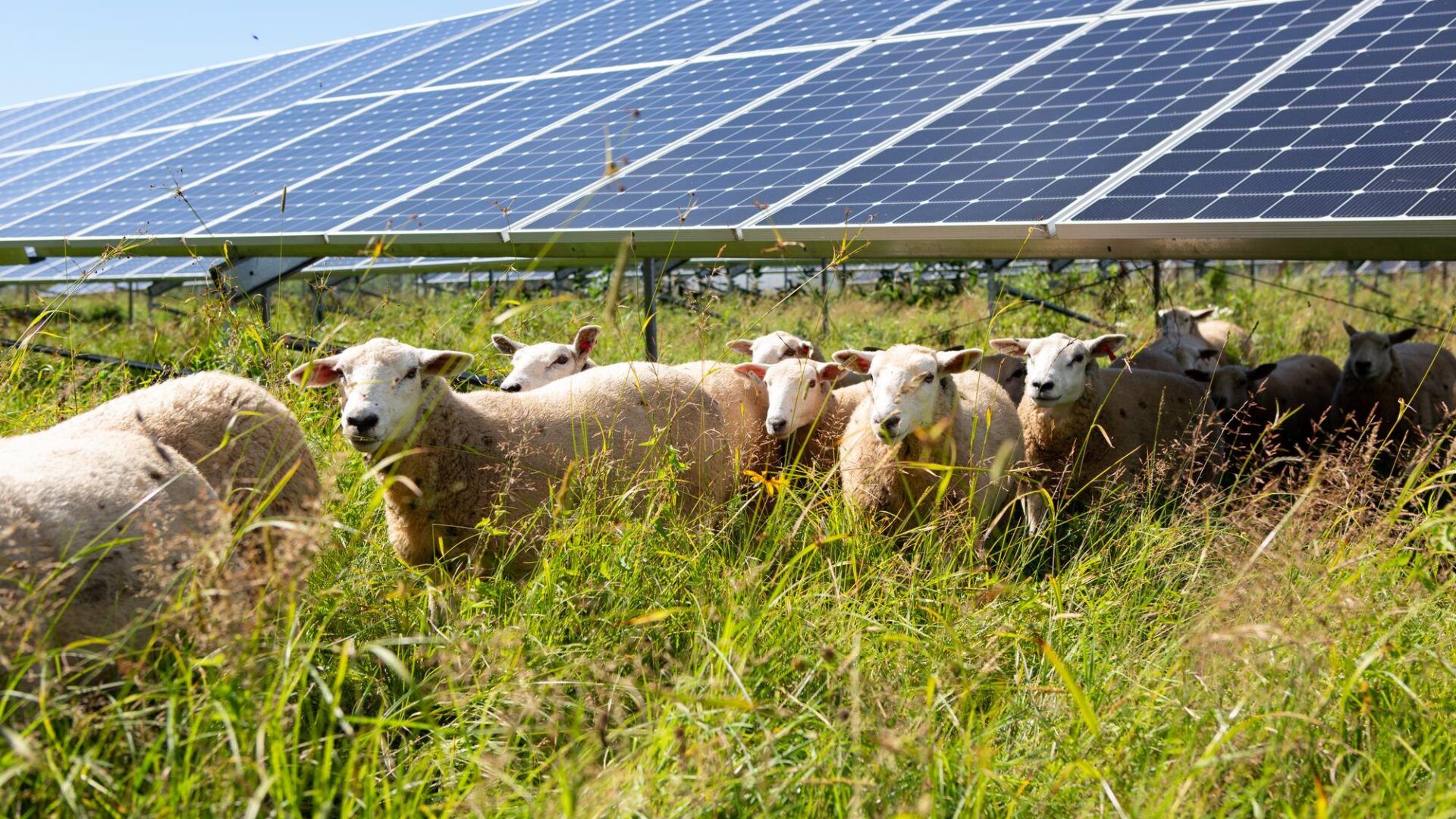Solar and farms

Solar panels are durable. In fact, most warranties cover them for 25 years. But they’re not permanent – and that can be a good thing.
When farmers choose to install solar on their land, that decision doesn’t have to last forever. Eventually, they’ll be able to remove those panels and return the land to agriculture. And when they do, they’ll be able to farm even better than before. That’s because solar panels can replenish soil health, in addition to replenishing farmers’ finances.
How does solar make farmland healthier?How does solar make farmland healthier?
If you’re a farmer, you already know about topsoil. It’s rich in nutrients and organic matter, and it’s what crops need to grow.
These days, topsoil is being degraded at rates never seen before. Conventional agricultural practices – like frequent tillage – cause the organic matter in topsoil to break down into tiny particles. Those particles are easily swept away in the wind, or washed away by the rain. This leaves the soil without the crucial nutrients needed to grow healthy crops.
More than a third of the farmland in the U.S. Corn Belt has lost its topsoil completely. Not only is this reducing crop yields, but it’s also increasing the amount of sediment and nutrient runoff from farms into nearby waterways. The increased nutrient load can cause deadly algal blooms which negatively impact both human and environmental health.
Reduced crop yields mean lower profits for farmers. Plus, as the soil continues to degrade each year, the farmers are forced to purchase more fertilizer to make up for the nutrient loss.
The more degraded the soil becomes, the more farmers stand to lose. They’re vulnerable to decreased yields, increased production costs, and worsening environmental conditions. In many cases, all of these factors are at play. They tend to build on each other. This creates a harmful cycle that is nearly impossible to stop.
With all these pressures, it’s no wonder some farmers are turning to solar as a money-saving option. Solar provides overworked farmland with a much-needed break. With time, the topsoil underneath solar panels can actually restore itself.
Solar panels provide shade from direct sunlight. The shade lowers the temperature of the soil underneath, which increases its ability to retain moisture. In turn, that reduces erosion and leads to overall healthier soils. It even boosts the diversity of beneficial microbes present in the soil.
What are agrivoltaics?What are agrivoltaics?
Solar’s soil health benefits are multiplied when farmers make use of agrivoltaics. This is a combination of “agriculture” and “photovoltaics” (the word for solar energy technology). In an agrivoltaics project, farmers and solar developers work together. They install and operate solar panels, while growing a healthy agricultural ecosystem around the panels.
There is a low barrier to entry for many farmers to take advantage of this opportunity. That’s because prime farmland is also prime solar land. Wherever you can grow corn and soybeans, you can have a solar array. With agrivoltaics, you can have both.
An agrivoltaics project begins with seeding the land with native grasses and plants. This creates a deep root system that protects the soil from erosion. Once the plants are established, the solar panels can be installed.
The farmers then have to keep the plants from overgrowing and covering the panels. One great way to do this? Grazing sheep. The sheep manage the vegetation and produce natural fertilizer that adds to the soil’s health. On top of that, they can provide an additional source of revenue for farmers.
There are other ways to make use of agrivoltaics, too. Universities across the Midwest are conducting studies on which crops produce best under solar panels. Solar developments with beekeeping and native plants are also being seen on smaller agrivoltaics projects.
Why is now the time for rural solar?Why is now the time for rural solar?
Sadly, many farmers are struggling. According to the USDA, net farm income in the U.S. is expected to decrease by 25% in 2024. That’s the largest year-to-year decrease on record. Paired with the estimated $17 billion increase in production costs, the economics of farming are daunting.
Due to the rising production costs, some farmers choose to lease their land to other farmers every year. But the dwindling economic gains also mean that these leases usually don’t earn much money for the landowners. They tend to earn only around $300 per acre in Indiana, with short lease terms.
Solar developers can offer another option. They often offer farmers more than $1,000 per acre with a 30-year contract. This long-term, reliable income allows farmers to continue making money off their land. In some cases, it may mean the difference between having to sell off their land, or being able to keep the land in their families for future generations.
Add in the benefits of agrivoltaics, and farmers stand to make up to five times more money than they would by leasing their land for other purposes.
By enabling farmers to make more money from their land than they can with conventional agriculture, solar farms boost local economies. They generate clean energy. Agrivoltaics prove that solar energy can benefit both the agriculture industry and individual farmers. And they return the soil to a healthy, productive state. Without agriculture, there is no food. Solar farms and agrivoltaics do not only add clean energy to the grid, they also revitalize our farming communities and feed our communities.
Additional resourcesAdditional Resources
2024 Purdue Crop Cost & Return Guide
The Nature Conservancy’s 2023 poll on Hoosier sentiments for renewables
Get the latest on solar straight to your inbox.
Fight for your solar rights.
Everyone has the right to go solar. Spread the sunshine nationwide and in your local community by taking action, joining events, and more.